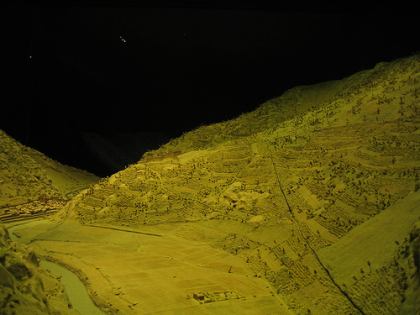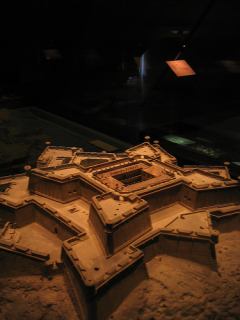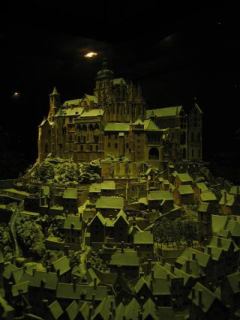Dark Caves of Enlightenment
Friday, October 27th, 2006Before we came to Istanbul, we took a quick 12-hour overnight-bus detour to the middle of Turkey, to a place called Cappadocia. It was the most extrordinary place, and one of the most beautiful, that I have never heard of. Christian Byzantines used the eroded valley as a haven of safety from the various armies galloping across Turkey about 800CE. Into the walls of the valley, they carved out cave dwellings, stables, pigeon coops and even cathedrals. More cathedrals, in fact, then I would’ve thought a small community needed but impressive in their quality and longevity nonetheless.
During our short stay there, in a cave hostel, no less, we participated in a tour and a couple of hikes in the area. Most impressive were the valleys near Goreme, the town in the centre of Cappadocia, through which we hiked with a group from the hostel. Imagine- why do you suppose they call this one “Love Valley”?
The region is also apparently known for its wine making. I read that scientists believe the first attempt at wine making was in Northern Turkey, near the Caucasian mountains. Seems the wine making isn’t as popular as it may have once been but we did see evidence of old vineyards on our hike and sampled a few grapes as we passed by. We didn’t actually drink any Turkish wine but we thoroughly sampled the beer.
 This morning, we treated ourselves to a morning walk to the Starbucks on Istiklal street. There are 36 Starbucks in Istanbul and so far, we have seen only his one. It’s in a trendy area and it seems to be full of business people and private school teens.
This morning, we treated ourselves to a morning walk to the Starbucks on Istiklal street. There are 36 Starbucks in Istanbul and so far, we have seen only his one. It’s in a trendy area and it seems to be full of business people and private school teens. We don’t go for Starbucks very often here because of the option of going for tea. Served scalding hot, with two lumps of sugar in a small glass, our tea breaks have been something I look forward to each day. In our favourite tea shop, a short walk up the hill, there are boardgames and backgammon boards for people to use while sipping and puffing on hookahs. It’s cozy inside, with lounging cushions and pillows on the floor in a couple of rooms, and booths and easy chairs in the front and back. Such an enjoyable ritual to adopt.
We don’t go for Starbucks very often here because of the option of going for tea. Served scalding hot, with two lumps of sugar in a small glass, our tea breaks have been something I look forward to each day. In our favourite tea shop, a short walk up the hill, there are boardgames and backgammon boards for people to use while sipping and puffing on hookahs. It’s cozy inside, with lounging cushions and pillows on the floor in a couple of rooms, and booths and easy chairs in the front and back. Such an enjoyable ritual to adopt.
 Actually, Museum of Maps and Models is a poor translation. Relief maps or 3-D maps would be more accurate. They are all 18th century model fortresses and their surrounding landscapes—used by military planners to evaluate weakness and plan defences. Some of the models were a few feet square and others must have been ten or twelve feet square, all excuisitly detailed with buildings, trees, brickwork, rivers and fences.
Actually, Museum of Maps and Models is a poor translation. Relief maps or 3-D maps would be more accurate. They are all 18th century model fortresses and their surrounding landscapes—used by military planners to evaluate weakness and plan defences. Some of the models were a few feet square and others must have been ten or twelve feet square, all excuisitly detailed with buildings, trees, brickwork, rivers and fences.